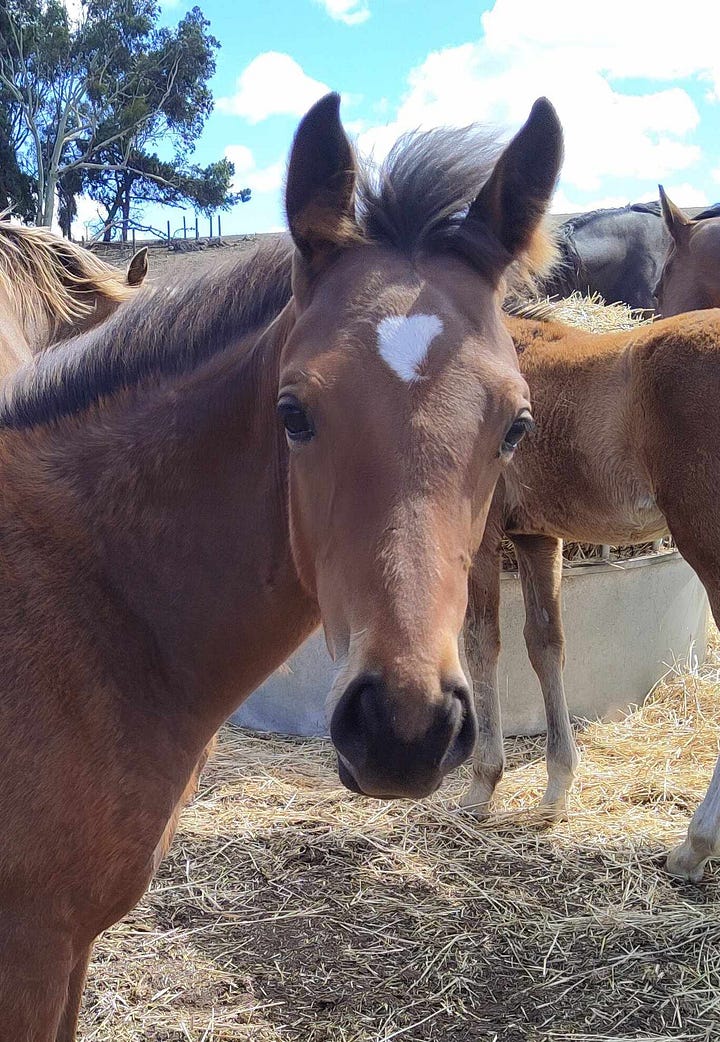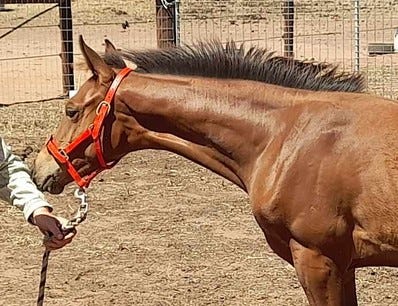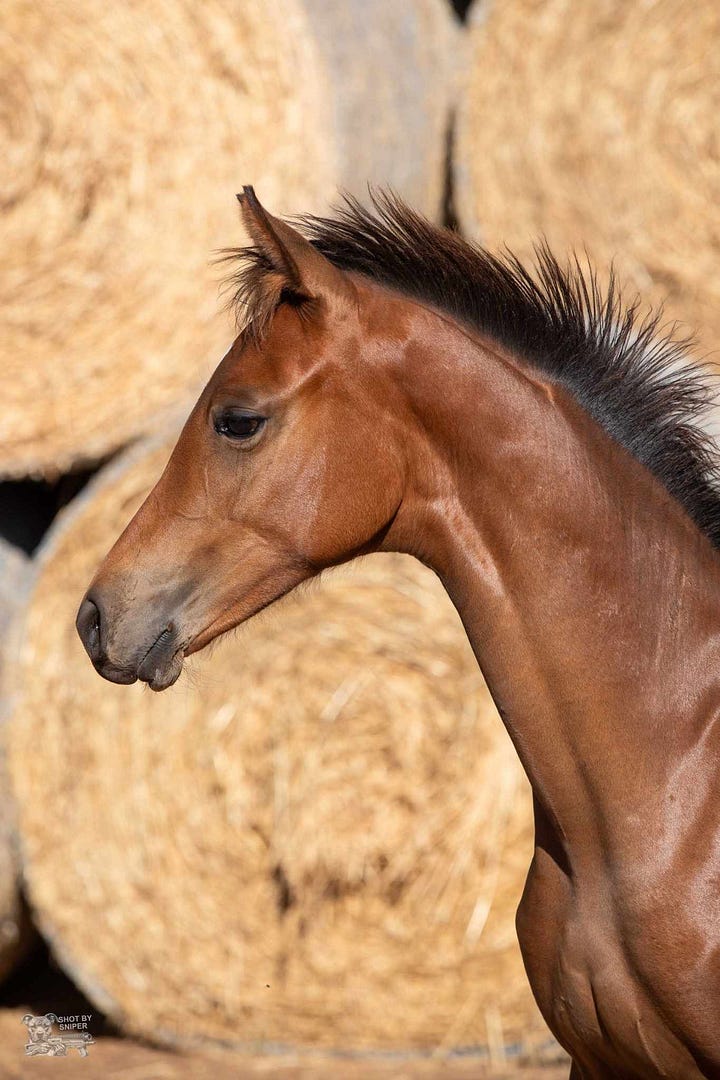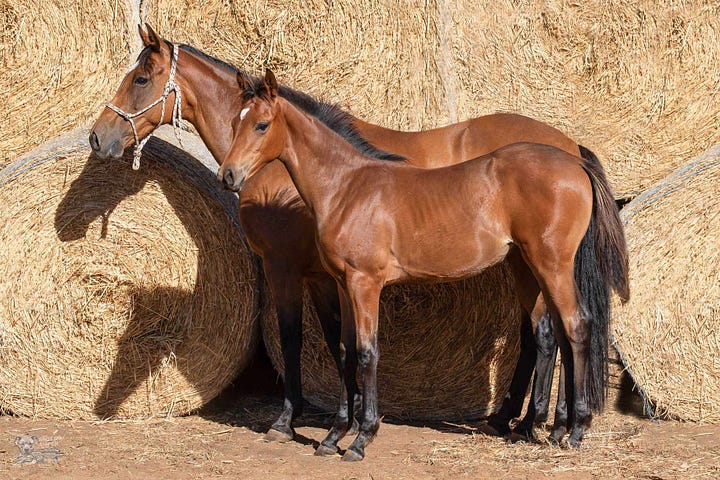A few weeks ago we took some photos of a lovely filly we had for sale. We also said that “the photos do not do her justice.”
You can see for yourself, the photos we took here:




You’ll notice there is nothing really wrong with them, in terms of posing the filly, and certainly you can see what she is. In fact we sold the filly from these photos. But they don’t really “grab you.”
Anyone can take these photos, and they do. The point being that these photos do not stand out from the crowd.
However, now take a look at the professional shots. Same horse.
The difference?
The setting, the long lens on the camera, the depth of field (that means focusing exactly on the subject so that the background is blurred or “in the distance”) and taking longer to get the shots. The knowledge of the pro, and the tools she used, made all the difference.
Even the colour is accurate.
Secondly, we then had an extra person to get attention, prick ears etc. The different settings give alertness and interest, which makes the photos stand out from the ordinary. The shoot took approximately 3/4 hour all up.
And finally, a professional can edit out the background, like manure, rough fencing, horse handler and anything else distracting from the photo.
You can see the difference here, taken only 2 weeks apart:




Need I convince you any more of the benefit of good quality photos?
How to find a photographer?
There aren’t many photographers who know how to take a good photo. You must choose a photographer who knows how to take good action shots, because horses only give you a quick moment to get the right shot.
I particularly liked this lady’s dog photos, which she specializes in. Dog action is almost as hard as taking a horse photo and they understand about posing a dog.
Equine photographers who have their photos in equestrian magazines, or who do Thoroughbred Yearling Sales, know how a horse should be posed, and are another good choice. Show them samples of the type of photos you are wanting, and explain your requirements to them.
Also they must be familiar with the correct posing of the horse - where all 4 legs can be seen from side on. Side-on means absolutely square-on to the side of the horse. Head shot photos should be 3/4 front, so you just see the edge of the horse’s second eye.
All other photos are a bonus.
And finally, the long lens means the photographer must step well back to take the shot. This eliminates “boof nose” you so often see in newspapers from journalists who know nothing about taking horse photos.
Think of the backgrounds which might be suitable at your own place, and check out the light for the time of day. Therefore, choose a time where the backgrounds will be facing the light at the time of the shoot, or change the background to suit the time of day.
These photos were taken at 9am, so the light was coming from the west (southern hemisphere).
Then give the photographer free rein to do the shoot.
Choose a photographer who will charge for the shoot and give you all the photos taken as part of the package. Those who charge up front, then charge you for any you order, are frankly, doing you a disservice; if they are any good, you’ll want a lot of photos, which you can’t afford.
So you want someone who will give you a flat rate.
That way you have them all for social media etc, and personal use. If you have something you really want to blow up into a wonderful print for framing, or use it in some other way, they can charge you for the service.
Happy shooting!
Till I see you in your inboxes next time ~ Jeanette





Thank you for the restack Darin.